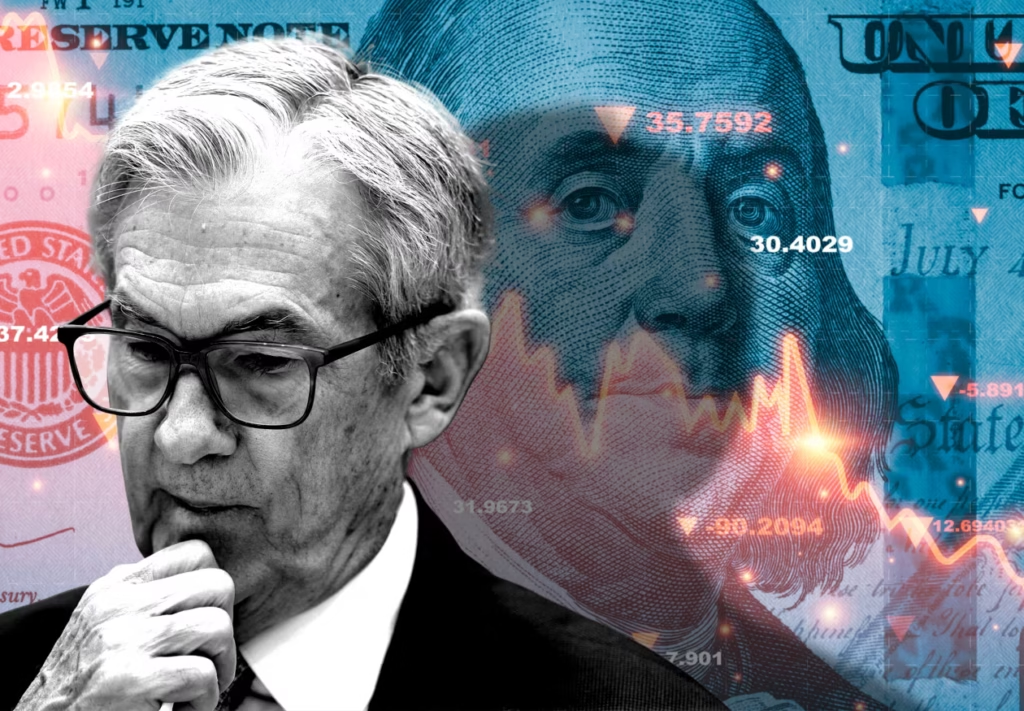As investors worried about a possible blow to the central bank’s independence and considered the possibility that interest rates might lower sooner than anticipated, indications that President Donald Trump might act quickly to appoint a successor to Federal Reserve Chair Jerome Powell sent the U.S. dollar plunging to a three-year low Thursday.
At 97.39 Thursday morning, the ICE U.S. Dollar Index DXY, which compares the value of the dollar to a basket of six significant competitors, was down 0.3% and at its lowest level since March 2022. For the first time since September 2021, the euro (EURUSD) increased by 0.4% to trade above $1.17.
“News reports suggesting a replacement to Fed Chair Powell could be announced in a few months served as the immediate catalyst for today’s selloff. “The attempt to directly influence the Fed does not sit well with investors,” Bannockburn Capital Markets chief market strategist Marc Chandler wrote in a report on Thursday.
Trump is considering whether to expedite his selection of Powell’s successor, whose tenure expires in 11 months, according to a Wall Street Journal report published late Wednesday. That would be much early than usual and would enable the nominee to act as a kind of shadow chair, offering commentary on the Fed’s actions and potentially acting as a spokesperson for Trump’s interest rate policies.
Since delivering 100 basis points, or one percentage point, of rate reduction in 2024, the Fed has maintained its current rate structure. Trump was enraged by that and called Powell “a very stupid person” on Wednesday for failing to provide further easing.
Thierry Wizman, global FX and rates strategist at Macquarie Group, wrote in a note that Trump’s attempt to present a “dovish,” semi-official, perspective is meant to cast doubt on the Fed’s decisions, and that’s never a good way to promote the integrity of monetary policy and, by extension, the reserve currency status” of the U.S. dollar.
Concerns about the possible loss of the Fed’s independence as well as theories that the Fed would actually lower interest rates earlier than anticipated could be the source of pressure on the dollar.
According to the CME FedWatch Tool, Fed-funds futures have priced in a 27% chance of a quarter-point drop in the fed-funds rate at the central bank’s upcoming policy meeting, which concludes on July 30. It is higher than the 12.5% it was a week ago. At its most recent policy meeting last week, the Fed kept interest rates constant. Powell indicated at a news conference that members were still waiting to see how Trump’s tariff policies would impact inflation before making any cuts.
Since then, two Fed governors—Michelle Bowman and Christopher Waller—have hinted that, should inflation statistics continue to behave well, they would be amenable to a July cut. Powell seemed hesitant to move quickly on rates during his two days of testimony before Congress this week.
According to the Journal, Trump is considering Treasury Secretary Scott Bessent for the position, along with former Fed Governor Kevin Warsh and National Economic Council Director Kevin Hassett. According to the report, Waller and former World Bank President David Malpass are among the other contenders.
According to the Journal, Bessent first proposed the idea of a shadow Fed head last November while serving as an adviser to the Trump campaign. However, he abandoned the proposal after receiving criticism from his mentor, the legendary investor Stanley Druckenmiller.
Ben Emons, the creator of FedWatch Advisors, stated in a Substack article that the dollar has been declining since late last year and that the path of least resistance is downward due to uncertainty surrounding the Fed’s leadership.
However, the stronger dollar “is also signaling where rates may be headed sooner; the probability of a rate cut in July could increase when Trump announces the next candidate as the market prices in the shadow chair, who is favorably biased towards low rates,” he stated.
The next candidate might be revealed just prior to the July Fed policy meeting, according to Emons, “to make a clear point that rates must come down ‘right now,’ especially because market expectations are not priced for such an announcement.”





